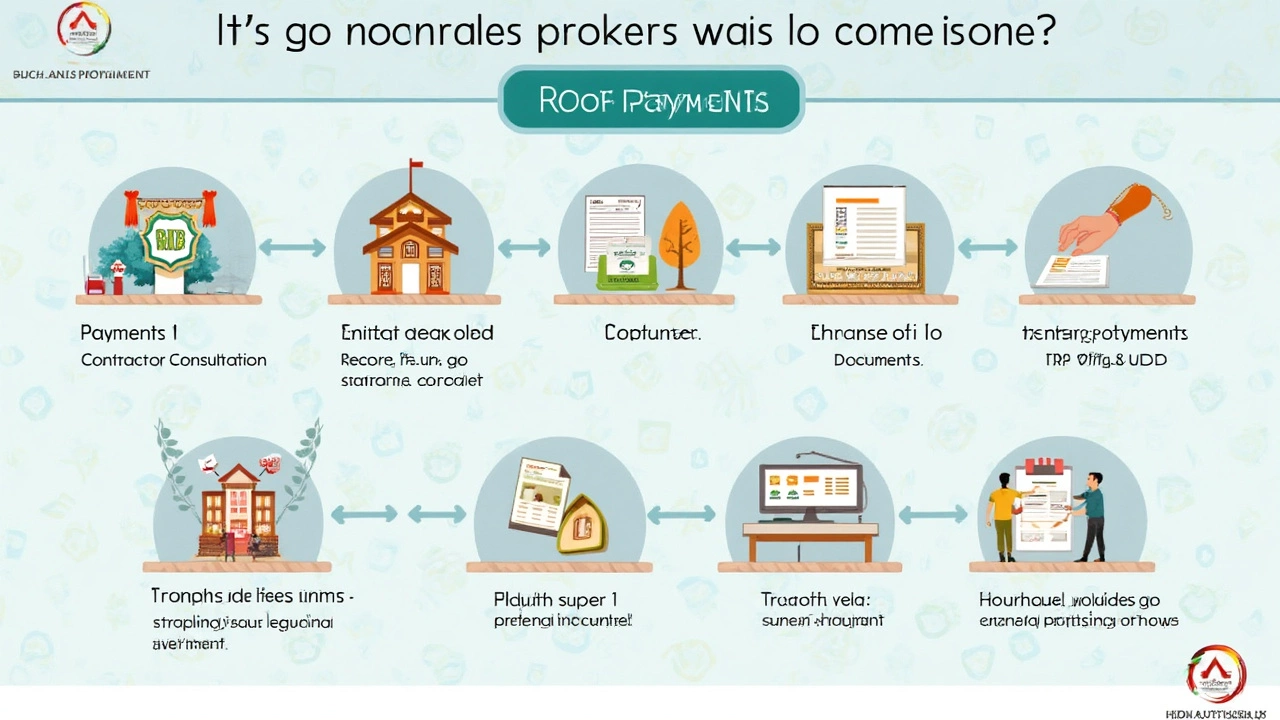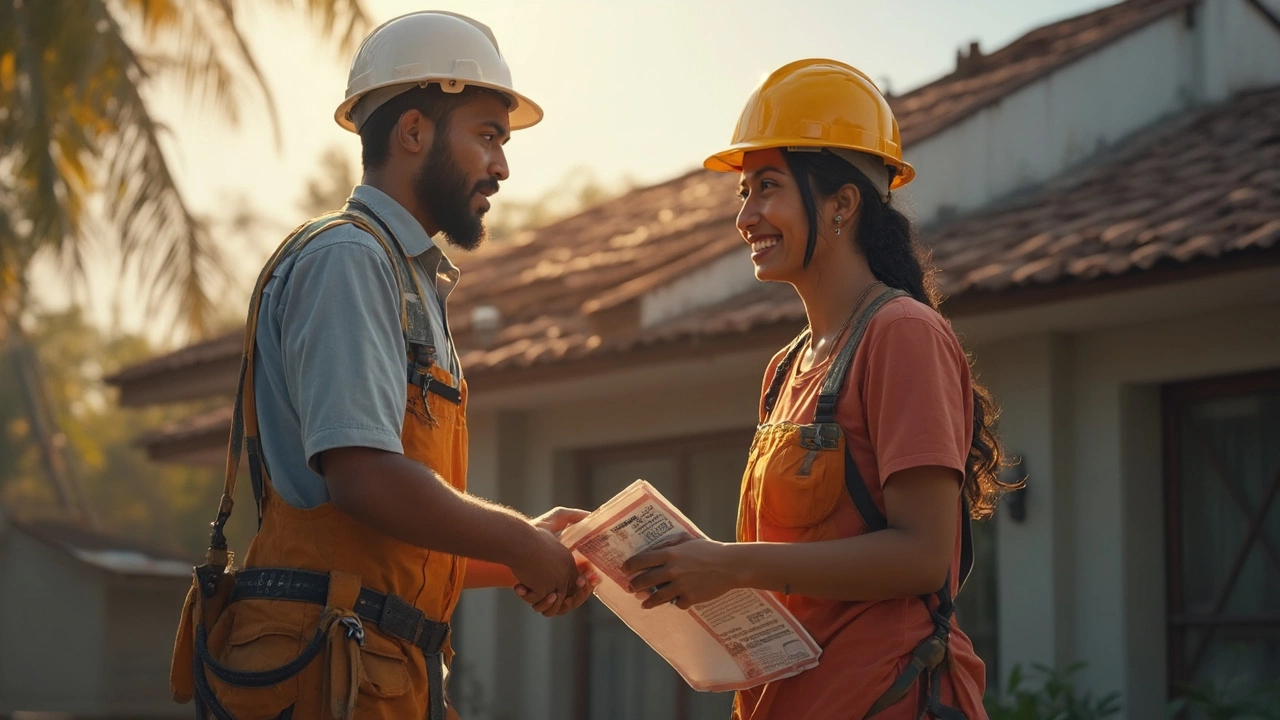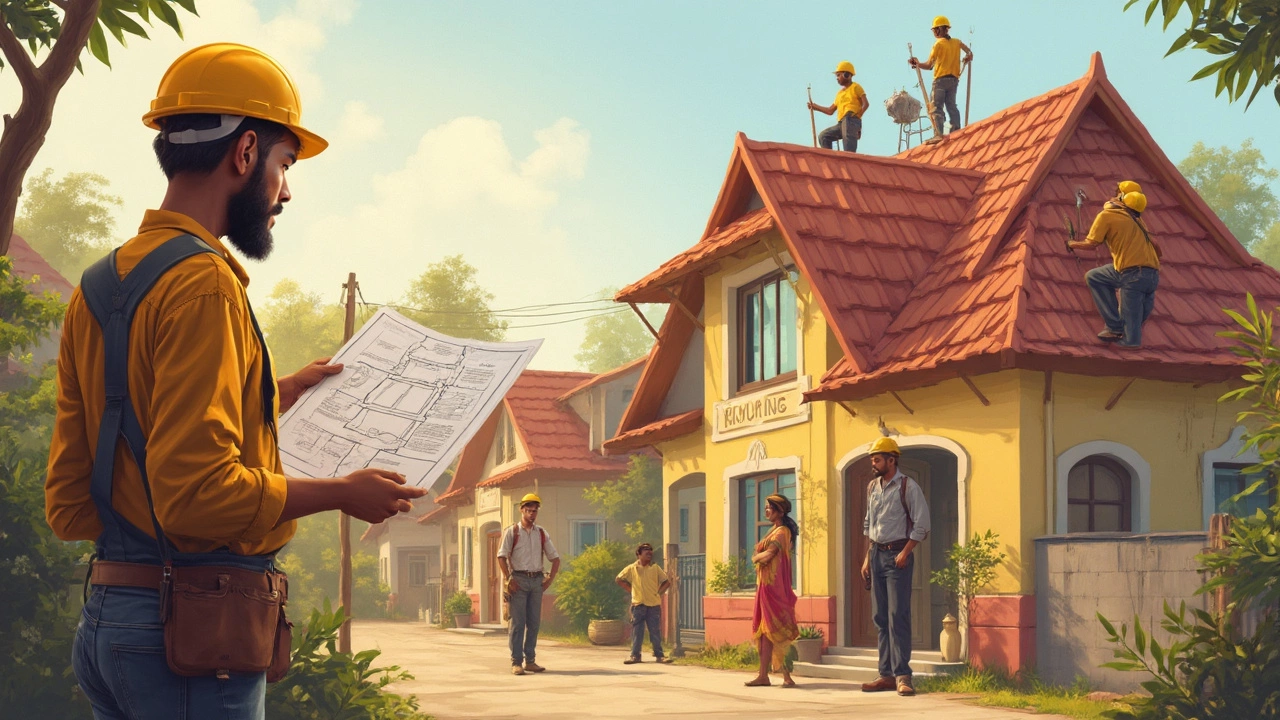Roof payments trip up more homeowners than you’d think. Most folks imagine you just pay your roofer after the job is done, but it’s rarely that simple. There are different ways to structure payments, and it can depend on the size of your project, insurance issues, and even local laws.
If you’re dealing with a roofing contractor, they’ll usually ask for some money upfront — this covers materials and gets you on their calendar. Don’t be alarmed if the down payment is about 10-30% of the total quote; that’s standard. Just never pay for the whole roof before a shingle goes up.
Here’s something a lot of homeowners miss: if you’re getting your roof replaced after storm damage, your insurance company might send you a check made out to both you and your mortgage company. That can slow things down, so don’t leave your contractor hanging while you wait for your bank to endorse the check.
- Breaking Down the Roof Payment
- Common Roof Payment Structures
- How Roof Insurance Claims Affect Payment
- Red Flags and Common Mistakes
- Pro Tips for Managing Roof Payments
Breaking Down the Roof Payment
The first thing you really need to know: a roof payment isn’t just one single lump sum. It’s the whole process of when, why, and how you’ll shell out money for roofing services. Usually, this covers everything—materials, labor, and maybe some extras—whether you’re patching up a leak or going all-in for a roof replacement.
Most roofing contractors use a step-by-step payment system, especially if the job is big or insurance is involved. Here’s the most common pattern:
- Deposit or Down Payment: Upfront payment. This gets you a spot on the roofer’s schedule and helps them buy your roofing shingles and supplies. Typical range: 10-30% of the total estimate.
- Mid-Project Payment: Sometimes, you’ll pay midway when materials have arrived or a certain amount of work is done. Not every roofer asks for this, but it’s common for larger jobs.
- Final Payment: This is the last portion due after the roofer finishes the project and you’ve had a chance to inspect the work. Never fork over the entire bill up front.
In the US, most states don’t let contractors collect 100% of the payment before work starts. Some, like California, have laws putting a cap on the down payment for home improvement jobs (no more than $1,000 or 10% of the job price, whichever is less). If your contractor wants full payment upfront, back out fast. That’s a red flag.
Now, if your roof is being paid for by insurance (say after hail or wind damage), things get a bit more complicated. Insurance companies usually release payment in chunks: one early payment to cover materials and get the job started, then a second chunk (called recoverable depreciation) after the work is complete. Some data suggests about 60% of roof replacements each year in the US are paid at least partly by insurance, so if this is your case, you’re not alone.
Here's a quick look at typical roof payment flows in the table below:
| Stage | Who Pays (and When) | Type of Payment |
|---|---|---|
| Before Work Starts | Homeowner | Deposit/Down Payment |
| During Project | Homeowner or Insurance | Mid-Project Draw |
| After Completion | Homeowner or Insurance | Final Payment |
Every dollar and signature matters. Make sure you understand the payment plan in your contract, get every promise in writing, and check what’s standard where you live. That’s how you protect yourself and your wallet.
Common Roof Payment Structures
There isn’t just one way to pay for a new roof, and that can honestly be confusing. Most contractors have preferred ways they handle roof payment, usually based on what keeps things running smoothly for both sides. Let’s break down what you’re likely to run into when booking roofing services.
1. Deposit and Final Payment
This is the classic structure. You put down a deposit, which is usually 10-30% of the project cost, before work starts. The rest is due when the job’s finished and you’re happy with it. It helps your contractor order materials and hold your spot on their schedule.
2. Three-Stage Payments
Bigger jobs or companies might chunk it into thirds: one payment to kick things off, a second payment when materials land at your house, and a final payment after installation. This keeps everyone motivated and accountable at each stage.
3. Insurance Claims and Payments
If your roof was wrecked in a storm, most roofing services work with insurance payments. Usually, your insurer sends out an initial check for the claim’s actual cash value. After the work’s done, they’ll send another for the rest, minus your deductible. Don’t expect insurance to pay everything in one go.
4. Financing Arrangements
Not everyone can drop several thousand bucks at once. Many roofers partner with finance companies so you can split payments over months or years, a big relief for tight budgets.
- If you use financing, always compare interest rates between your contractor’s lender and your own bank or credit union.
- Watch out for zero-interest offers that turn into hefty rates if you miss payments.
5. Payment by Bank or Credit Card
Some contractors accept credit cards or bank transfers for flexibility. You might pay a small processing fee, but it’s handy if you want points or don’t want to write a check.
Here’s a quick table showing common deposit percentages around the country:
| Region | Average Deposit (%) |
|---|---|
| West Coast | 10%-20% |
| Midwest | 15%-25% |
| Southeast | 20%-30% |
| Northeast | 15%-25% |
Whatever structure you choose, always get the terms in writing. And if a contractor demands the full amount upfront, that’s your cue to walk away fast. It’s just not how reputable roofing services operate.

How Roof Insurance Claims Affect Payment
When you file a claim for a damaged roof, the payment process changes compared to a standard out-of-pocket roof payment. You’re juggling not just your roofing contractor, but also your insurance company—and sometimes your mortgage lender too. This three-way dance can get confusing if you don’t know what’s coming.
First, the insurance company sends an adjuster to check out your roof. If the claim gets approved, you won’t just get one lump sum. Most times, the insurer issues what’s called an Actual Cash Value (ACV) check. That’s just a partial payment; it’s the roof’s value after depreciation. This first check usually isn’t enough to pay for everything upfront.
After the job’s done and you prove you paid your contractor, you may get a second check for the Recoverable Depreciation. Add these two together, and that’s usually your full settlement for the roof replacement or repair. Here’s a simple breakdown:
- ACV Payment: The first payment, which subtracts depreciation and your deductible
- Recoverable Depreciation: The second payment, paid after you show proof of completed work
- Your Deductible: Your own out-of-pocket cost, paid directly to the roofer
Keep an eye out for the name on the check. Insurance companies often include your mortgage lender as a co-payee. You’ll have to get their signature before you can cash it. This step slows down lots of jobs because banks can take a week or more to process and return the check.
Some contractors offer to "waive" your deductible, but that’s insurance fraud. Run the other way if you hear that offer. Always pay your deductible directly—it keeps everything above-board and protects your claim.
If you’re unsure how payments are handled, ask your roofer up front. Good roofing companies deal with insurance all the time and can walk you through the steps. A lot of folks get stuck waiting on mail or miss a step with their bank, so ask questions if anything isn’t clear.
| Payment Step | Who Pays | When |
|---|---|---|
| ACV Check | Insurance | After claim approval |
| Deductible | Homeowner | Before or during work |
| Recoverable Depreciation | Insurance | After work finished, proof sent |
Red Flags and Common Mistakes
There’s no shortage of home improvement horror stories out there—especially when it comes to roof payment problems. Getting burned by a shady contractor or missing a key detail can cost real money and headaches. Here are the biggest red flags and mistakes homeowners should watch out for.
- Paying 100% upfront: If a roofer wants the full amount before any work starts, walk away. Legit roofers never do this. It’s normal to pay a small deposit, but the rest comes in stages or only after completion.
- No written contract: Handshakes don’t cut it. Always get a detailed contract with all costs and the payment schedule for your roof payment. This keeps you and the contractor on the same page.
- Pressure tactics: If someone pushes you to sign today or offers a ‘today only’ deal, that’s a red flag. Quality companies give you time to think it over.
- No proof of insurance or license: Never skip this step. Ask for documentation before you give any money. If their answer is a story instead of paperwork, look elsewhere.
- Using your insurance payout for something else: The check from your insurer is meant for the roof payment, not a vacation. Skipping repairs can bite you later if you have a second leak or another claim.
A study in 2023 by the National Roofing Contractors Association found over 50% of consumer complaints were due to unclear contracts or poor communication about roof payment schedules. Every year, thousands of homeowners learn the hard way that even a small mistake like missing a final inspection before making that last payment can lead to problems (and sometimes legal fights).
If you’re dealing with insurance, double-check every figure on the payout documents. Even a small math mistake on what the insurer covers vs. what you’re expected to pay can cause chaos down the road.
| Red Flag | What It Can Cost You |
|---|---|
| Paying 100% Upfront | Risk of contractor disappearing; no leverage for incomplete work |
| No Written Contract | Confusion over price and scope, legal headaches |
| No Insurance Verification | You pay for damages or injuries on your property |
The bottom line? If you keep your guard up and double-check every roof payment agreement, you stand a much better chance of avoiding the common traps.

Pro Tips for Managing Roof Payments
Don’t just rush into your roof payment without a plan. Managing those payments the smart way can save you money—and a whole lot of headaches. Here’s how you stay ahead of the game:
- Get everything in writing. Before you hand over a dime, your contractor should give you a written contract detailing the payment schedule. A clear agreement keeps surprises away.
- Never pay it all upfront. Legit roofing companies don’t ask for 100% before they start. If anyone pushes for full payment first, that’s a giant red flag. Most companies ask for 10-30% down.
- Check your contractor’s credentials. This sounds basic, but you’d be shocked how many folks skip it. Confirm their insurance, licenses, and reviews before you start for peace of mind—especially for projects involving roofing services.
- Understand your insurance claim process. If you’re dealing with storm damage, talk to your adjuster and your contractor about exactly when and how money will move. Delays happen when mortgage companies need to endorse checks—factor that in, so your project doesn’t stall out.
- Pay with traceable methods. Use checks, credit cards, or bank transfers for your roof payment—skip the cash. This way, you have a record if anything goes sideways.
Let’s put it in perspective: the National Roofing Contractors Association recommends holding back at least 10% of the total until the job is actually done. That last bit keeps your roofer motivated to finish strong.
| Payment Stage | Usual Amount (%) | When It's Paid |
|---|---|---|
| Down Payment | 10-30% | Booking the Job |
| Progress Payment | 30-40% | Halfway Point |
| Final Payment | 30-40% | After Completion & Inspection |
Before you sign off, take a quick look at the work and double-check you got all the services you paid for. And if your state gives you a 3-day "cooling off" period to cancel a contract, use it if something feels off. Quick calls and careful planning can prevent expensive missteps when you navigate your next roof payment.

Written by Fletcher Abernathy
View all posts by: Fletcher Abernathy